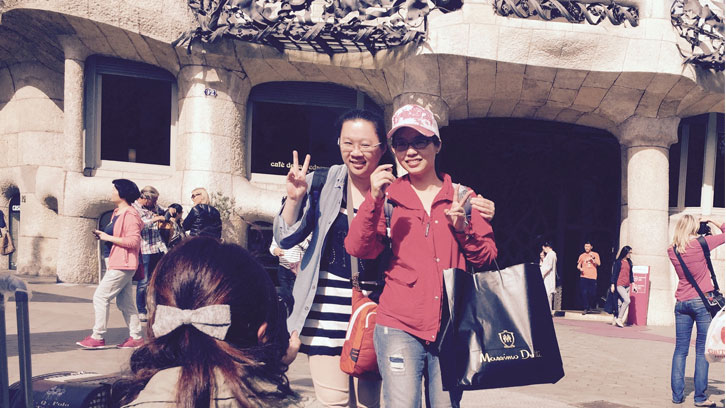Chinese tourism, a new challenge for the Spanish tourist industry

Fifteen years ago, China was still fairly isolated from the outside world and Chinese tourism in Spain was almost non-existent. In 2004, Spain was approved by the Chinese National Tourism Administration (CNTA) as an international destination and the numbers of Chinese visitors have been increasing ever since. This phenomenon is not unique to Spain, however. Since 2013, China has been the largest source of tourists for destinations worldwide. That is to say, Chinese tourists who travel outside their country outnumber those of any other country in the world: more than 100 million Chinese tourists travelled outside China in 2014. Furthermore, they spent US$164.8 billion, making them the nationality with the highest total spending abroad.
This new wave of travellers has forced many tourism professionals to rethink tourist products and adapt them to this growing group. Spain was visited by 287,873 Chinese tourists in 2014, an increase of 14% over the previous year. The Chinese tourist in Spain spends an average amount of €2.040. In addition, due to the decline in Russian tourists, the Chinese tourists became the high-spending group in shopping, averaging €975 per visitor. According to a recent article by the TUDISTAR Research Group (Lojo & Cànoves, 2015), Barcelona is the favourite destination in Spain for Chinese tourists. Most organized tours allow more days and more free time in Barcelona, allowing the tourists to explore the city at their leisure.
Analysis of the options offered by the four main Chinese tour operators organizing trips to Europe suggests that their clients are not primarily looking for sun and sand. Travellers arriving in Barcelona are interested in seeing and being in contact with cultural elements of the places they visit. They appreciate visiting heritage sites, iconic spots, monuments, and scenic areas. In addition, they are interested in shopping, and especially the luxury sector. In their travels through Europe, these tourists, who usually have a medium-high purchasing power, appreciate buying Western brands. The most valued products, and those that motivate most spending, are accessories, jewellery, and shoes. The influx of Chinese tourists in Barcelona’s renowned shopping street, the Passeig de Gràcia, is mostly noticed in boutique stores such as Louis Vuitton, Prada, Chanel, Cartier, and Tiffany.
In short, Chinese tourism, along with other emerging tourism populations, could be an opportunity to expand the industry’s offer and boost profits. Although Spain is consolidated as a sun and sand destination, it is appropriate to extend and adapt the tourism product. Reorientation toward a combined product in which there is more opportunity for other activities is important to increase the sustainability of the industry. Conversion to ‘quality tourism’ that is more respectful of the local environment and the local community rather than ‘quantity tourism’ will allow Spain to be recognized as a more cosmopolitan, cultural, modern, and attractive destination for tourists with broader interests and greater purchasing power.
References
Lojo, Aureli; Cànoves, Gemma. El turismo chino en Barcelona. Elementos clave de un fenómeno reciente. Documents d’Anàlisi Geogràfica. 2015,vol. 61, num. 3, p. 581-599. doi: 10.5565/rev/dag.267.

